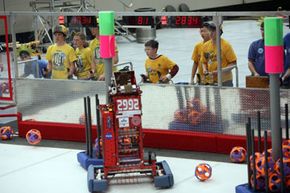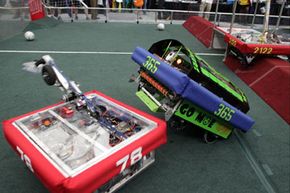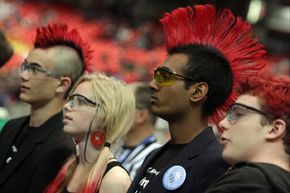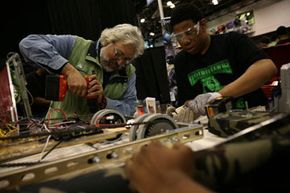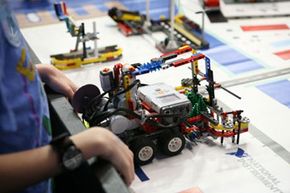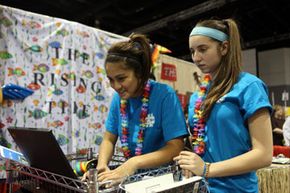Students have a lot to gain from robotics programs like FIRST. They work with professional engineers, develop team-building skills and get their hands dirty with some actual robotic construction, programming and problem solving -- all while potentially having the time of their lives. (Did we mention that teams may travel to other cities for competitions without Mom and Dad necessarily in tow?)
But in order for all this to happen, these adventure-bound young men and women either have to find a FIRST team or build one from scratch. Here's what every new FIRST team needs:
Two or three professional engineers: These volunteers play an essential role in any FIRST robotics team. They use their technical expertise to guide students through all the engineering, design and construction challenges involved in the construction of a competitive robot.
Two or three additional adults: There's more to FIRST than nuts, bolts and circuit boards, so you'll need additional volunteers to handle all the nontechnical demands. This means organizing and communicating with FIRST itself, registering for events, fundraising, shipping and making travel arrangements. Established FIRST teams often depend on additional volunteers for everything from Web design to bookkeeping.
Financial sponsors: FIRST teams have to leverage thousands of dollars to compete. The 2010 registration fee (which covered parts and participation in one event) was $6,500 for rookie teams and $5,000 for veteran teams who reused parts from previous events. Teams could then register for additional events at a price of $4,000 each. This is where all the volunteer work comes in handy. FIRST recommends raising between $15,000 and $30,000 in order to participate in two to three regional competitions through corporate donations and school fund-raising efforts.
Space, tools and time: Yes, teams will need the time, tools and space to design, build, program and test a working robot. This means access to a machine shop, secure storage space and enough room to safely practice. You'll also need hand tools, power tools and machine tools. As far as time goes, FIRST recommends that teams meet several times a week from mid-December to the end of April. Some of the more experienced teams meet year-round and compete in offseason events.
Fifteen to 25 high-school-aged students: Finally, remember the old adage, "the more the merrier." More students means more opportunities for your FIRST team, so open the doors to anyone supported by the school principal and parent volunteers.
